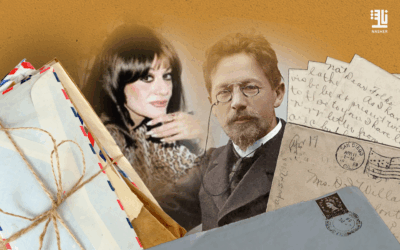Hans Christian Andersen
Born on April 2, 1805, Odense, near Copenhagen, Denmark—died August 4, 1875, Copenhagen, he was a Danish master of the literary fairy tale whose stories achieved wide renown. He is also the author of plays, novels, poems, travel books, and several autobiographies. While many of those works are almost unknown outside Denmark, his fairy tales are among the most frequently translated works in all of literary history.
Andersen, who was born to poor parents, fought the rigid class structure of his time throughout his life. The first significant help came from Jonas Collin, one of the directors of the Royal Theatre in Copenhagen, to which Andersen had gone as a youth in the vain hope of winning fame as an actor. Collin raised money to send him to school. Although school was an unhappy experience for Andersen because of an unpleasant headmaster, it allowed him to be admitted to the University of Copenhagen in 1828.
The next year Andersen produced what is considered his first important literary work, Fodrejse fra Holmens Kanal til Østpynten af Amager i aarene 1828 og 1829 (1829; “A Walk from Holmen’s Canal to the East Point of the Island of Amager in the Years 1828 and 1829”), a fantastic tale in the style of the German Romantic writer E.T.A. Hoffmann. This self-published work was an immediate success. He then turned to playwriting. After some unsuccessful attempts, he achieved recognition for Mulatten (1840; “The Mulatto”), a play portraying the evils of slavery. The theatre, however, was not to become his field, and for a long time Andersen was regarded primarily as a novelist. Most of his novels are autobiographical; among the best-known are Improvisatoren (1835; The Improvisatore), O.T. (1836; OT: A Danish Romance), and Kun en spillemand (1837; Only a Fiddler).
Fun Facts:
Some of Hans Christian Andersen’s fairy tales are autobiographical.
According to scholars, the tale of The Ugly Duckling reflects Andersen’s own feelings of alienation. As a boy, he was teased for his appearance and high-pitched voice, which often made him feel isolated, and he later wrote a story about a boy named Hans who gets made fun of as a child. Much like the ugly duckling, Andersen only later in life became the “swan”—a cultured, world-renowned writer with friends in high places. Andersen even admitted of The Ugly Duckling, “This story is, of course, a reflection of my own life.”
There’s also evidence that Andersen placed his characters in desperate and hopeless situations to reflect his own personal traumas, which included being raised in poverty, losing his father, and having to briefly work in a factory at age 11 to support his mother.
- Hans Christian Andersen’s original version of The Little Mermaid was a lot more depressing than Disney’s take.
Andersen’s Little Mermaid story from 1837 was far darker than the kid-friendly Disney movie it would later inspire. In the original, an unnamed mermaid who falls in love with a prince is offered the chance to take a human form, even though she’ll live in perpetual agony and has to have her tongue cut out. The mermaid’s goal—besides love—is to gain an immortal soul, which is only possible if the prince falls in love with her and marries her. After the prince marries someone else, however, the mermaid contemplates murdering him, but instead accepts her fate and throws herself into the sea, where she dissolves into sea foam. The mermaid is greeted by spiritual beings who say they’ll help her get into heaven if she does good deeds for 300 years.
- Poor translations may have altered Hans Christian Andersen’s image abroad.
According to UNESCO, Andersen is the eighth most-translated writer in the world, trailing right behind Vladimir Lenin. Though his works have been reproduced in more than 125 languages, not all of them have been faithful retellings. From the beginning, there have been many examples of “shoddy translations” that “obliterated” his original stories, according to the writers Diana Crone Frank and Jeffrey Frank in their modern translation of The Stories of Hans Christian Andersen. As a result, Andersen’s reputation beyond Scandinavia was “not as a literary genius but as a quaint 19th-century writer of charming children’s stories,” the pair write.
- Hans Christian Andersen wore out his welcome while staying with Charles Dickens.
Andersen met his literary hero, Charles Dickens, at an aristocratic party in 1847. They kept in touch, and a decade later Andersen came to stay with Dickens at the British author’s home in Kent, England. The visit was meant to last two weeks at most, but Andersen ended up staying five weeks—to the dismay of the Dickens family. On his first morning there, Andersen proclaimed that it was a Danish custom for one of the sons of the household to shave their male guest. Instead of complying, the family set him up with a local barber. Andersen was also prone to tantrums, at one point throwing himself face down on the lawn and sobbing after reading a particularly bad review of one of his books. Once Andersen finally left, Dickens wrote and displayed a note that read, “Hans Andersen slept in this room for five weeks—which seemed to the family AGES!” Dickens stopped responding to Andersen’s letters, which effectively ended their friendship.
- Hans Christian Andersen was terrified of being buried alive.
Andersen had a lot of phobias. He was afraid of dogs. He didn’t eat pork because he worried he would contract trichinae, a parasite that can be found in pigs. He kept a long rope in his luggage while traveling, in case he needed to escape a fire. He even feared he would accidentally be declared dead and buried alive, so before bed each night, he propped up a note that read, “I only appear to be dead.”
- Hans Christian Andersen is considered a “national treasure” in Denmark.
The Danish government declared Andersen a “national treasure” when he was in his late sixties, around the same time that he started showing symptoms of the liver cancer that would ultimately claim his life. The government subsequently paid him a stipend and started constructing a statue of the author in the King’s Garden in Copenhagen to commemorate his 70th birthday. Andersen lived to see his birthday, but died four months later. Over a century later, you can still see tributes to the writer’s legacy in Copenhagen, including a second statue of Andersen along the street named after him (H.C. Andersens Boulevard) and a sculpture of the Little Mermaid at Langelinje Pier. Visitors are also welcome at his childhood home in Odense, Denmark, and at a museum dedicated to his work in the same city.







